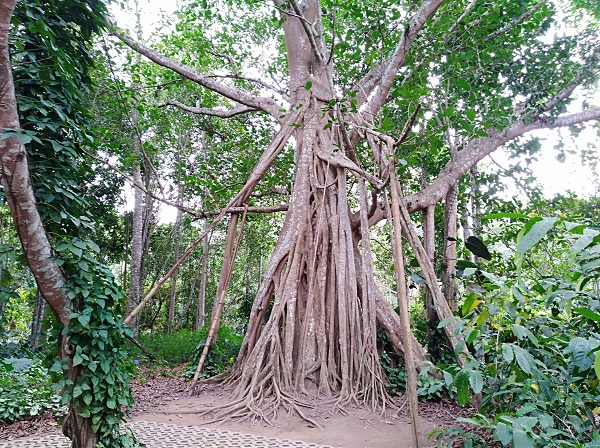The genus Ficus (figs) and their agaonid pollinating fig wasps are a classic example of coevolution. It represents perhaps the most extreme and ancient (about 75 million years) obligate pollination mutualism known.
Previous studies have suggested that pollinator host-switching and hybridization existed in some fig taxa with genetic evidence based on relatively few genes. However, those cases were mainly treated as rare exceptions, and strict-sense coevolution was still treated as the dominate coevolution model for the codiversification of this “extreme” obligate pollination system with high species richness.
Together with colleagues from 11 institutions from home and abroad, researchers from the Xishuangbanna Tropical Botanical Garden (XTBG) of the Chinese Academy of Sciences have recently shown that the fig hybridization mediated by pollinator host-switching in the obligate fig–wasp pollination system is more common than previously thought. The study was published in Nature Communications.
The researchers collected complete sequences for nuclear, chloroplast, and mitochondrial genomes from 15 fig species representing all major recognized Ficus clades.
By assembling and analyzing genomes from across the Ficus clades, the researchers, employing multiple commonly used hybridization detection analyses, found that hybridization events have occurred throughout Ficus evolutionary history.
“We conducted cophylogenetic reconciliation analyses and detected significant incongruence among all nuclear, chloroplast, and mitochondrial-based phylogenies, none of which correspond with any published phylogenies of the associated pollinator wasps,” said Dr. WANG Gang from XTBG.
Significantly, most hybridization events detected among the main Ficus clades exhibit associated pollinator host-switching events. Therefore, the evolutionary history of figs and wasps has likely been characterized by frequent host-switches among the pollinators.
“These pollinator host-switches and fig hybridization events are a dominant feature of fig–wasp coevolutionary history,” said Prof. CHEN Jin, one of the corresponding authors of the study.
The results also offered insights into the temporal and biogeographical reconstructions of fig–wasp mutualism.
“We suggest that future studies attempting to reconstruct the phylogenetic relationships or any coevolution stories between figs and their pollinators should not be constrained by the idea that species or even lineages of pollinators have strictly coradiated with the currently corresponding species or lineages of figs,” said Dr. WANG Gang.
Contact
CHEN Jin Ph.D Principal Investigator
Key Laboratory of Tropical Forest Ecology, Xishuangbanna Tropical Botanical Garden, Chinese Academy of Sciences, Mengla, Yunnan 666303, China
E-mail: cj@xtbg.org.cn

A banyan fig with thick air roots living in Xishuangbanna Tropical Botanical Garden(XTBG).(Image by WANG Gang)

